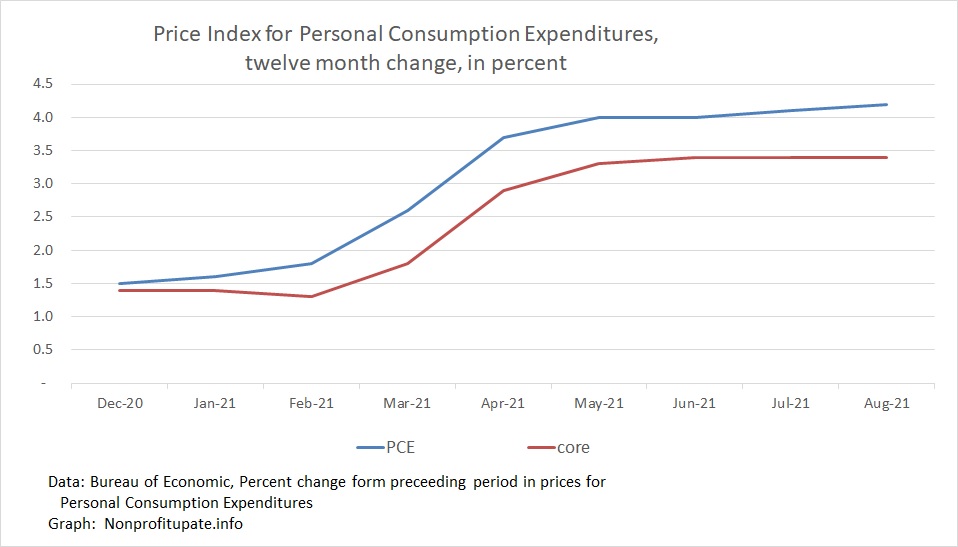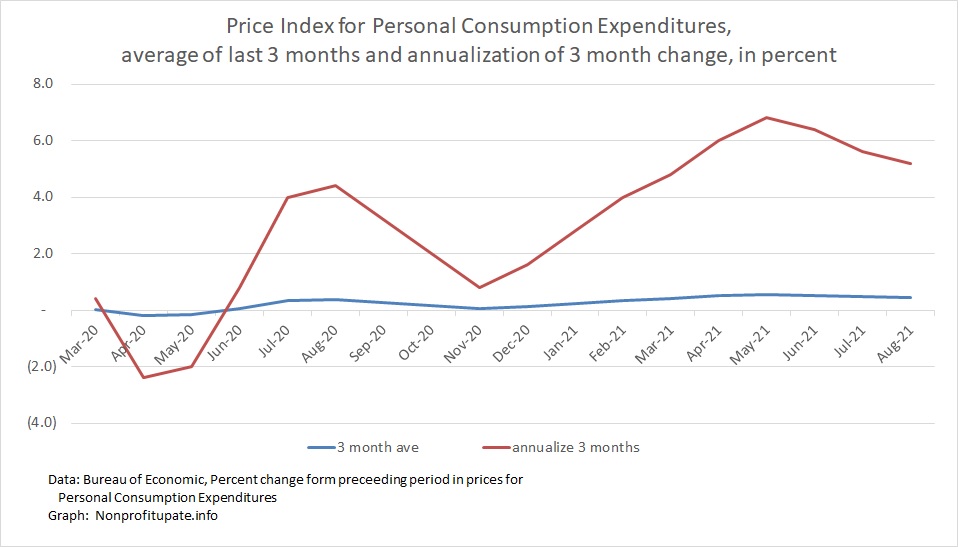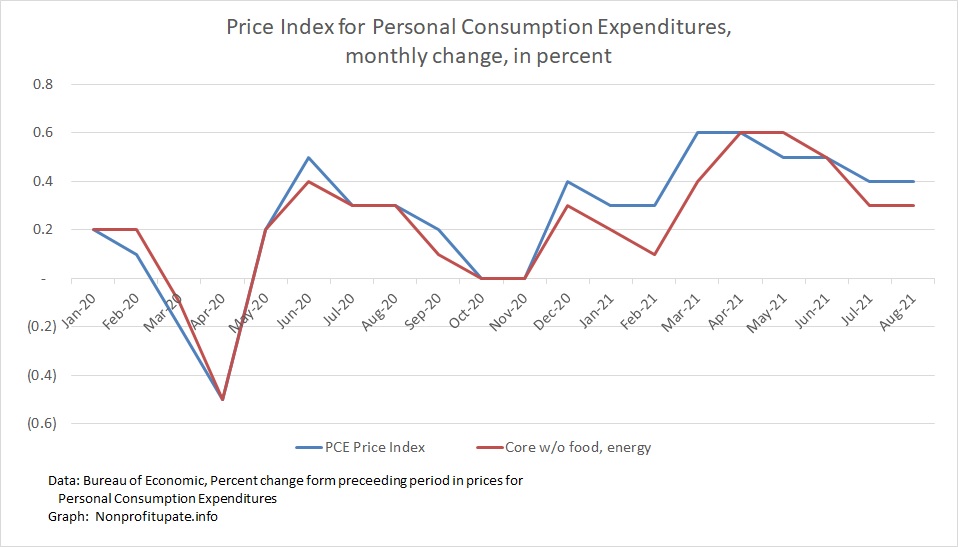The Personal Consumption Expenditure (PCE) inflation index again shows an increase of 0.4% in August 2021 after increasing the same in July. Since December 2020 this index has shown inflation of between 0.3% and 0.6% each month.
This indicates that inflation is continuing. Good news is that inflation is slowing, declining from 0.6% in March and April, to 0.5% in May and June, to 0.4% in July and August.
Bad news is annualizing the running three month inflation rate shows between 4% and 7% since February.
The PCE is the inflation index preferred by the US Federal Reserve. One unique aspect of the PCE is the numbers are routinely revised. This means prior month’s numbers will shift, sometimes by substantial amounts.
Graph at top of this post shows the monthly change in PCE, including the main index and the core index excluding food and energy.
You can see sharp volatility in the March through June 2020 timeframe.
Inflation, as measured by PCE, started increasing in December 2020. Since then there has been high inflation.
My calculation of the year-over-year change in PCE follows. The year-over-year change announced by Bureau of Economic Analysis cannot be used because the monthly data is revised meaning the previously announced year over year changes would have to all be recalculated. Year over year changes:

The unsettling part of the high inflation numbers since the first of the year is what happened if that is sustained over the course of a year. Let’s consider that unsettling idea.
Following graph shows an average of the last three months change with an annualization of the monthly change.

This shows that since February we have been running between 4% and 7% annualized inflation. July and August drop to 5.6% and 5.2%, respectively. Not good.
For more background on PCE, check out previous post Monitoring inflation through the Personal Consumption Expenditure (PCE) price index.
